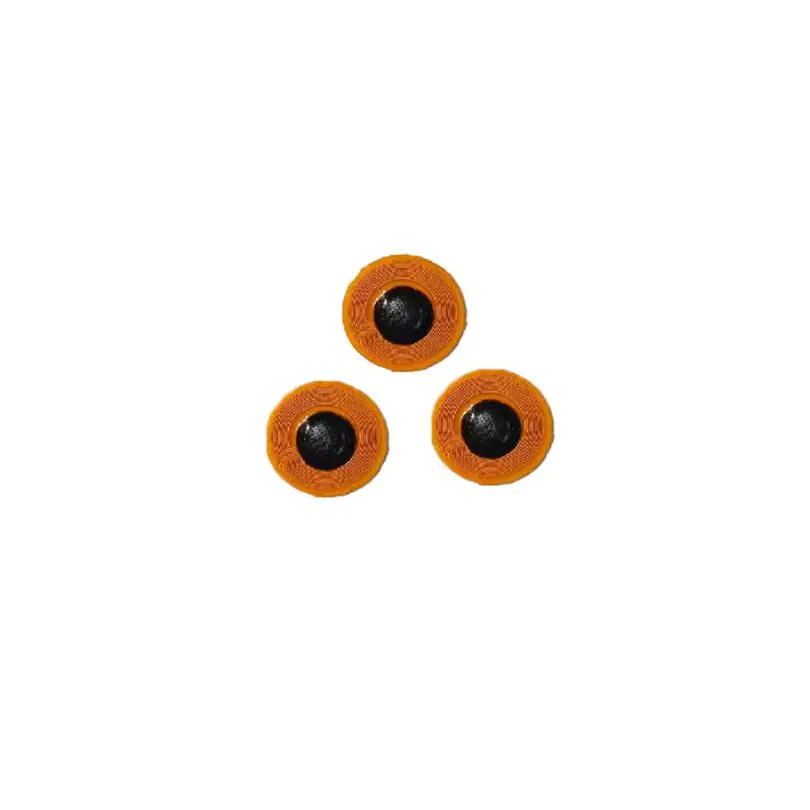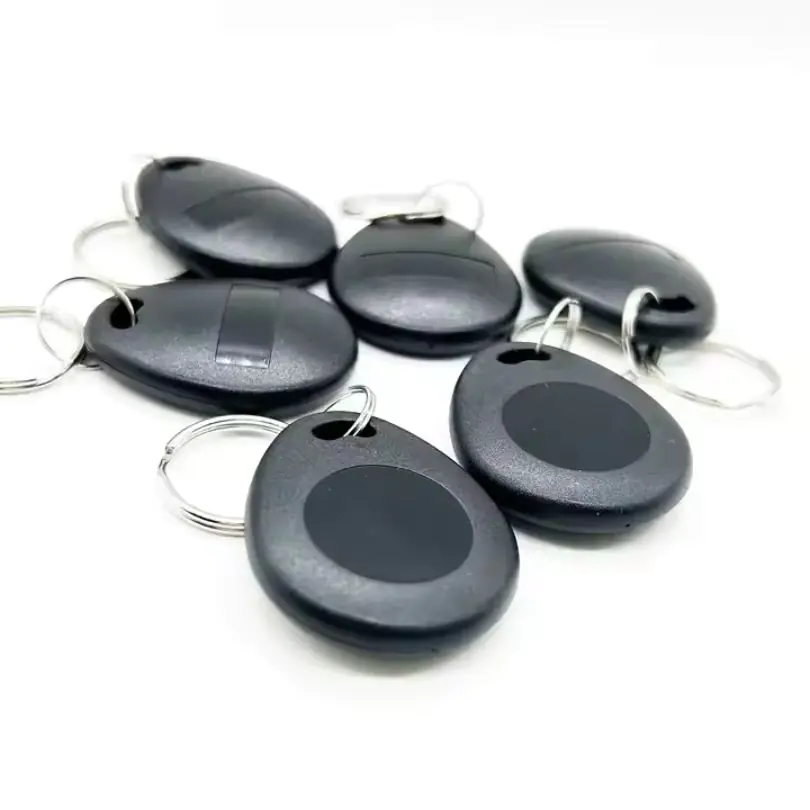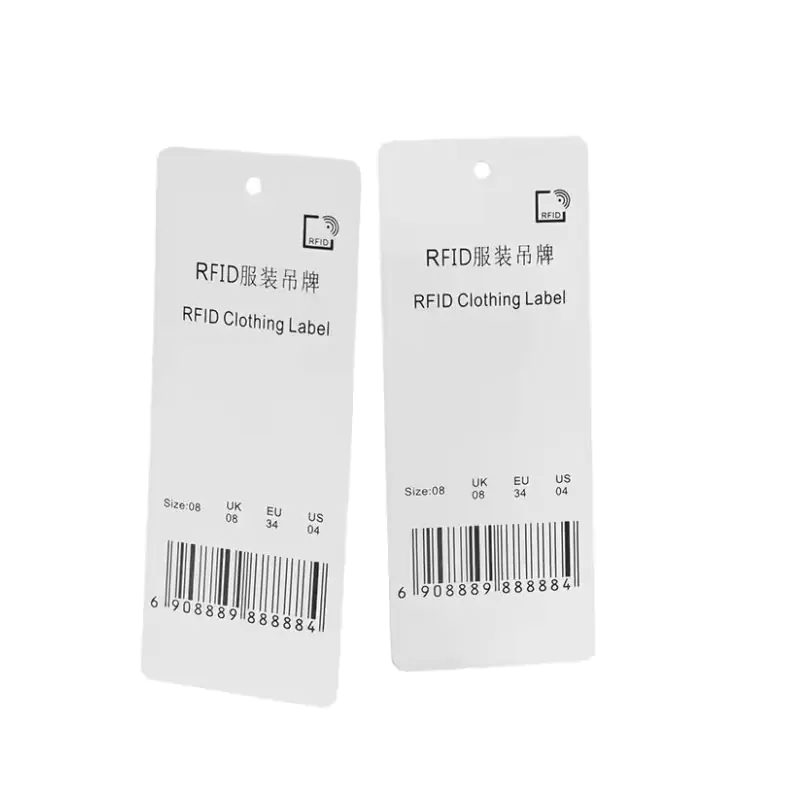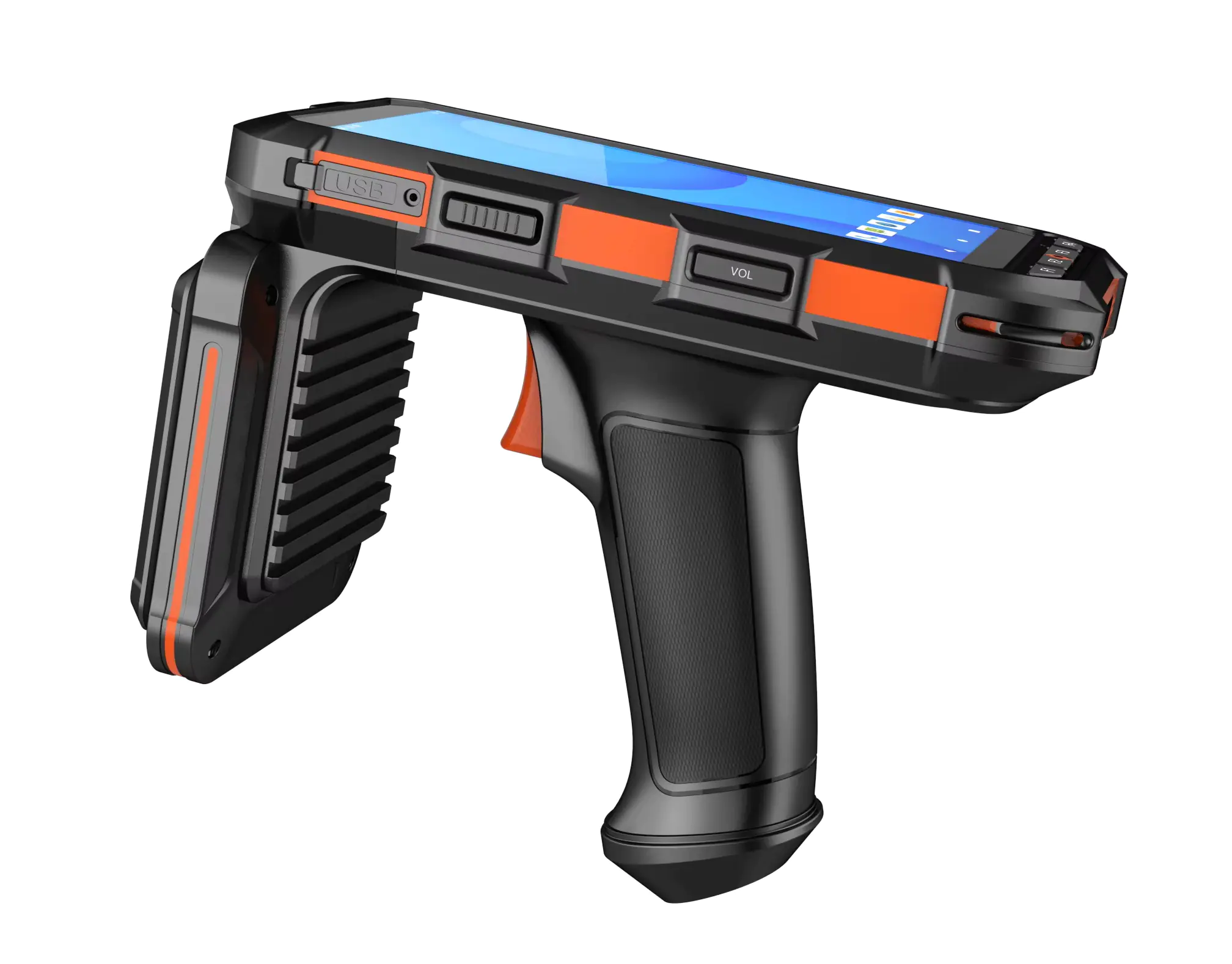
Përfitimet e jashtëzakonshme të kartave RFID: revolucionarizimi i zinxhirit të furnizimit dhe kontrolli i aksesit
Tabela e Përmbajtjes
Hyrje në kartat RFID
Kartat RFID—powered by Radio Frequency Identification technology—are becoming game-changers in industries such as retail, logistics, healthcare, and security.
But what exactly are RFID cards, and why are they so valuable? Let’s explore how RFID cards deliver significant business advantages in access control, supply chain efficiency, and asset tracking.
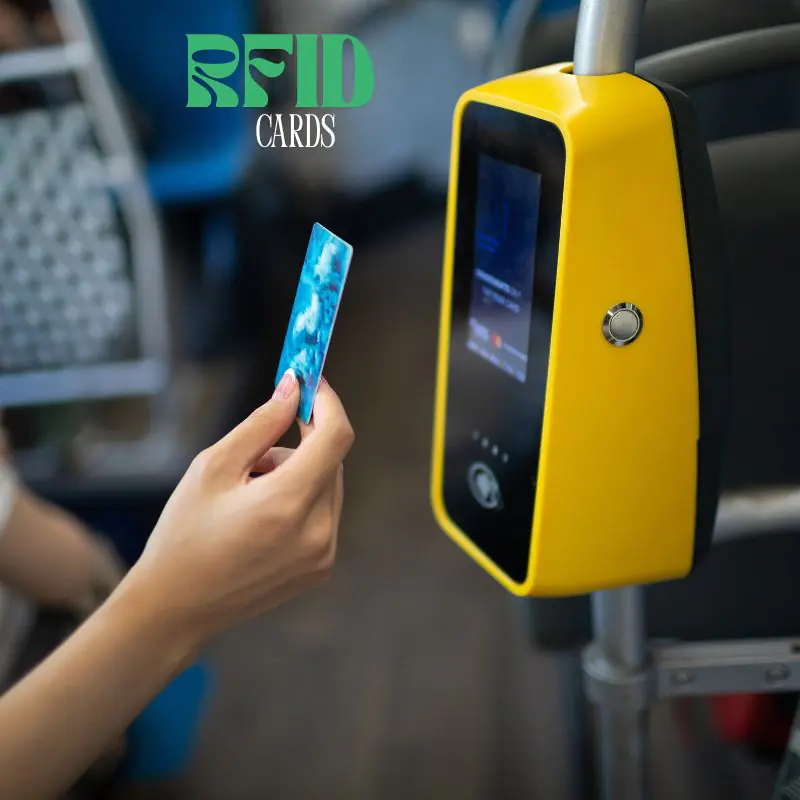
What Is RFID and How Do RFID Cards Work?
RFID stands for Radio Frequency Identification, a technology that enables data transmission between a tag (or transponder) and a reader using radio waves. This allows for wireless identification, authentication, and data exchange without direct contact or line-of-sight—making RFID incredibly powerful for automation and tracking.
The Basics of RFID Technology
At its core, an RFID system consists of three main components:
1. RFID Tag/Card (Transponder):
This contains a microchip for data storage and an antenna to receive and transmit signals.
2.Lexues RFID (Interrogator):
A device that emits a radio signal to detect nearby tags, receive their data, and send it to a computer or software system.
3. Backend Software System:
Integrates with the reader to process, store, and analyze the collected tag data (e.g., access logs, inventory movements).
Llojet e etiketave RFID
There are three frequency bands commonly used in RFID:
| Brezi i frekuencës | Përshkrimi | Typical Use Cases |
|---|---|---|
| LF (frekuencë e ulët) 125–134 kHz | Gama e shkurtër e leximit (deri në 10 cm) Good through metal/liquid | Livestock tracking, access control |
| HF (frekuencë e lartë) 13,56 MHz | Medium range (up to 10 cm) Often NFC compatible | Smart cards, event tickets, library systems |
| UHF (Ultra High Frequency) 860–960 MHz | Long read range (up to 10+ meters) Fast read rate | Logistics, warehouse inventory, retail tag |
Most RFID cards operate at 13.56 MHz (HF) and comply with the ISO14443A standard. This standard is commonly used for access control, NFC, and tap-to-pay systems.
Active vs. Passive RFID Cards
- Passive RFID Cards:
These cards have no internal battery. The signal from the reader powers them, and they are most common in access control, ID systems, and NFC tags. - Active RFID Cards:
They contain a battery, allowing them to transmit signals over longer distances and store more data. They are typically used in high-value asset tracking or real-time location systems (RTLS).
Business RFID cards are almost always passive, cost-effective, and maintenance-free.
How RFID Cards Transmit Data
Here’s how a typical RFID card works step-by-step:
1. The reader emits a radio frequency field.
2. When the card enters this field, its antenna picks up the signal.
3. The chip inside the card powers up (if passive) and responds by sending its stored data (such as a unique ID).
4. The reader receives and passes the data to a software system.
5. Based on the tag’s data, the system grants access, logs an entry, updates inventory, or initiates another process.
All this happens in milliseconds—with no physical contact required.
RFID Cards vs NFC Cards – What’s the Difference?
NFC (Near Field Communication) is a subset of RFID technology, based on 13.56 MHz HF RFID. But there are some distinctions:
| Veçori | Kartë RFID | NFC Card |
| Komunikimi | One-way (reader to tag) | Two-way (tag and device communicate) |
| Përputhshmëria | Requires RFID reader | Compatible with most smartphones |
| Gama | Deri në 10 cm | Up to 4 cm (shorter, but more secure) |
| Rasti i përdorimit | Access control, ID, inventory | Mobile payments, smart posters, pairing |
NFC RFID cards are ideal for applications involving smartphones or consumer interaction.
Common Formats of RFID Cards
RFID cards come in several formats to fit different environments:
- PVC RFID cards – Standard size like credit cards (CR80 format)
- Clamshell cards – Thicker and more durable
- Key fob cards – Compact for use on keychains
- Wristbands – Popular for events, gyms, or hospitals
- Sticker tags – These can be embedded in products, packaging, or posters
JIA RFID offers all these formats with custom chips, printing, and encoding options.
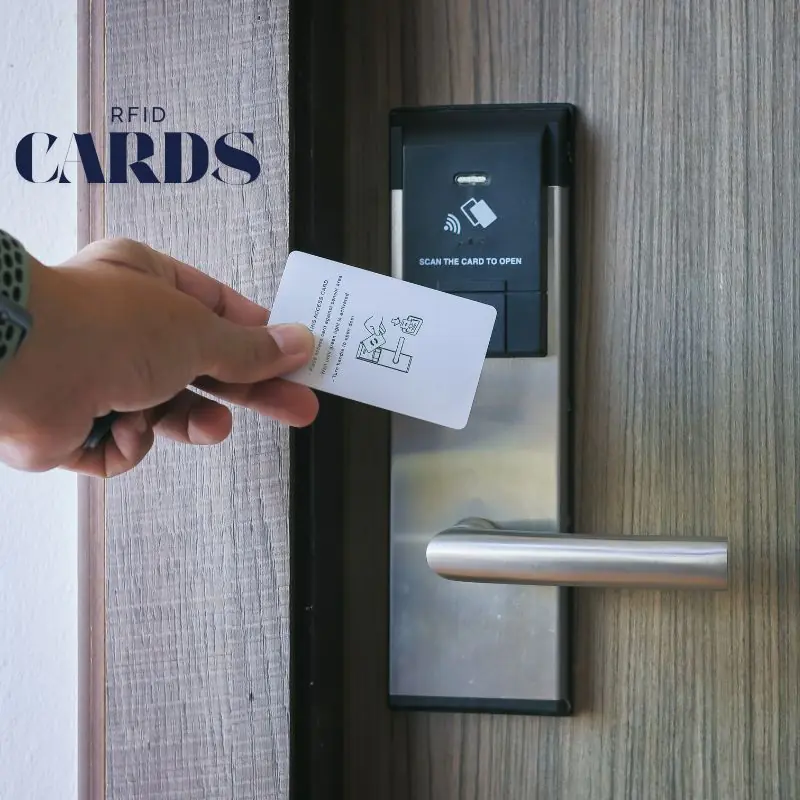
RFID Cards vs. Traditional Barcodes
| Veçori | Kartat RFID | Barkodet |
|---|---|---|
| Read Method | Wireless, contactless | Line-of-sight required |
| Read Multiple Items | Yes, bulk reads are supported | Një nga një |
| Qëndrueshmëria | Waterproof, long-lasting | Prone to fading or damage |
| Kapaciteti ruajtës | High (can hold extra data) | Limited to basic info |
| Rewriteable | Yes (many types) | Nr |
| Siguria | Encrypted options available | Easily copied |
Conclusion: RFID cards are more durable, secure, and versatile—especially in automation-heavy environments.
Real-World Applications of RFID Cards
RFID cards are used worldwide to streamline operations, improve security, reduce costs, and create seamless user experiences. Their ability to provide contactless, real-time identification and tracking makes them ideal for countless industries.
Below are some of the most impactful real-world applications of RFID cards:
1. Access Control in Offices, Campuses & Secure Facilities
RFID access cards are widely used for building security and employee identification.
- Door access control: Employees tap their card at door readers for entry—no need for keys or magnetic swipes.
- Role-based access: Different card credentials provide different access rights (e.g., HR, IT, Executive).
- Time & attendance tracking: Automatically logs employee check-in and check-out times.
- Integration: It can be linked to printers, elevators, vending machines, and even network login authentication.
RFID cards replace traditional keys and punch cards with a centralized, secure, and scalable solution.
2. Inventory & Asset Management in Warehousing and Logistics
RFID cards and labels enable instant, accurate, and automated tracking of goods and equipment.
- Pallet & container identification
- Real-time inventory updates during inbound/outbound scans
- Cycle counting and audits are completed in a fraction of the time
- Tool/equipment checkout using RFID-based sign-in systems
- Global tracking with EPC-compliant RFID tags and cloud systems
- RFID reduces shrinkage, eliminates manual entry errors, and accelerates inventory processes.
3. Patient Safety and Staff Access in Healthcare
RFID cards enhance security, traceability, and compliance in hospitals and clinics.
- Staff ID badges with room access and activity tracking
- Secure storage access for medications and controlled substances
- Patient ID wristbands or cards with medical history linked
- Nurse rounding and asset location with time-stamped event logging
- Hygiene compliance monitoring with touchless access to sinks/rooms
RFID improves both patient safety and operational accountability in high-stakes environments.
4. Retail & Customer Engagement
Retailers use RFID cards for contactless transactions, loyalty programs, and inventory management.
- Membership cards with integrated loyalty points
- In-store customer tracking for behavior analysis
- RFID-labeled products for smart shelves and automated reordering
- Tap-to-pay and tap-to-access promotions
- Self-checkout with RFID-tagged baskets or carts
RFID enhances the customer journey while cutting losses and optimizing stock.
5. Smart Libraries and Educational Institutions
In schools and libraries, RFID enables quick identification and anti-theft functionality.
- Library card issuance for contactless borrowing
- Automated check-in/check-out stations
- Student ID cards for cafeteria, bus access, and attendance
- Secured lab/equipment access using smart student or staff IDs
RFID enables efficient, accountable learning environments from K -12 to universities.
6. Parking, Transportation & Vehicle Access
RFID cards replace tickets and key fobs in modern mobility and transport systems.
- Hands-free parking access for staff or subscribers
- Tap-to-ride cards in metro and bus systems (e.g., MIFARE cards)
- Fleet management using vehicle-tag and driver RFID pairing
- Logistics yard access control without gate personnel
RFID speeds up vehicle movement while increasing access control and data visibility.
7. Hotels, Events, and Entertainment Venues
RFID wristbands and cards enhance guest experience, safety, and spending.
- Hotel room keycards with mobile check-in capability
- Event access badges with personalized schedules
- Cashless payment wristbands for festivals, parks, and resorts
- Restricted area access for staff or VIP attendees
- Post-event data on attendee behavior and zone popularity
RFID makes large-scale events and hospitality operations smarter, faster, and more enjoyable.
8. Government and Public Services
Governments are adopting RFID for secure, efficient, public-facing services.
- RFID-enabled national ID cards
- RFID vehicle registration and toll collection
- Border security and passport validation
- Controlled access to municipal buildings or voting booths
RFID increases security, speeds up verification, and reduces fraud in public administration.
9. Industrial Manufacturing & Quality Control
RFID cards are used in factories and production lines to ensure traceability and compliance.
- Operator authentication to machinery
- Product lifecycle tracking from raw materials to shipment
- QC status and inspection records linked to tagged products
- Tool and part tracking during fabrication and maintenance
RFID helps manufacturers meet ISO, FDA, or automotive compliance requirements efficiently.

Challenges of RFID Cards (And How to Overcome Them)
While RFID cards offer impressive advantages, their implementation comes with challenges impacting performance, cost, and user adoption—especially if not addressed early. The good news? Most of these issues are predictable and solvable with the right strategy and supplier.
Let’s explore the most common RFID challenges and how to overcome them.
1. Initial Setup Costs
Challenge:
RFID systems typically require investment in readers, software, infrastructure, and the RFID cards or tags themselves. This can feel overwhelming for small businesses or teams unfamiliar with the tech.
Zgjidhjet:
- Start with a pilot program to validate the ROI and performance in a controlled environment.
- Choose suppliers that offer free samples, low minimum order quantities (MOQs), and modular hardware.
- Consider long-term savings: Reduced labor, inventory shrinkage, and faster workflows often offset upfront costs quickly.
Tip: Partner with an RFID vendor that can scale with you over time.
2. Reader Interference & Read Accuracy
Challenge:
Metal surfaces, liquids, dense materials, or crowded tag environments can interfere with RFID signal strength—especially with UHF and HF systems.
Zgjidhjet:
- Use anti-metal RFID cards or tags with ferrite backing if mounting near metal.
- Choose specialized tag formats for high-moisture or chemical environments.
- Optimize reader placement and configure reader power/output for your use case.
- Regularly test read zones to ensure consistency, especially in mobile or dynamic environments.
Accurate reads = better data and fewer downstream errors.
3. Data Privacy and Security Concerns
Challenge:
Some businesses fear unauthorized scanning or cloning of RFID credentials—particularly in access control or payment applications.
Zgjidhjet:
- Use encrypted RFID cards (e.g., MIFARE DESFire EV2) with advanced authentication protocols.
- Choose unique UIDs and disable unnecessary memory blocks.
- Shield sensitive environments with RFID-blocking enclosures or access zones.
- Update systems regularly to patch vulnerabilities and rotate access credentials.
RFID systems can be even more secure than barcode or magnetic stripe cards with the right card and reader setup.
4. Integration with Existing Systems
Challenge:
Some legacy systems or third-party platforms may not support modern RFID data formats or real-time syncing.
Zgjidhjet:
- Work with RFID suppliers who offer API support or middleware integration tools.
- Ensure your software provider can accept EPC, UID, or custom field data.
- Use CSV/XML exports or middleware tools to act as a bridge during transition periods.
- Choose readers that support multiple protocols (Wiegand, TCP/IP, RS232) to ease integration.
A well-integrated RFID system drives automation, not IT headaches.
5. User Training & Adoption
Challenge:
Staff may be unfamiliar with RFID usage or resistant to adopting new workflows, especially if the technology seems complex or intrusive.
Zgjidhjet:
- Offer short training sessions or “cheat sheets” with visuals.
- Use videos or step-by-step demos to explain system benefits and usage.
- Appoint internal RFID champions to assist and gather feedback.
- Share early wins and quantifiable time savings to show value.
People adopt what they understand and what makes their jobs easier.
6. Durability Concerns in Harsh Environments
Challenge:
Depending on the application, standard RFID cards may degrade under extreme heat, cold, moisture, or abrasion.
Zgjidhjet:
- For extreme environments, use rugged RFID card casings (e.g., ABS, epoxy-sealed, or encapsulated tags).
- Choose heat- and UV-resistant materials for outdoor applications.
- Consider protective holders or card shields for heavy-use areas.
- Consult suppliers about tag material compatibility with your site conditions.
A customized RFID card format can extend tag life by years.
7. Signal Clutter in High-Density Environments
Challenge:
In areas with many RFID tags (e.g., warehouses, events), tags may cross-read or be misidentified.
Zgjidhjet:
- Enable anti-collision protocols in your RFID readers.
- Set specific scan zones and read cycles based on movement patterns.
- Use unique EPCs and smart filtering algorithms to eliminate false positives.
- Choose high-performance readers capable of rapid tag filtering.
Efficient traffic = efficient scanning.
E ardhmja e teknologjisë RFID
RFID has come a long way from basic access control and inventory management. As industries move toward automation, digitization, and smart infrastructure, RFID is poised to play a central role in the next wave of innovation.
From integration with IoT and AI to sustainability and miniaturization, the future of RFID promises to reshape how we track, interact, and make real-time decisions.
Let’s explore what the next 5–10 years of RFID technology could look like:
1. Integration with the Internet of Things (IoT)
As IoT ecosystems expand, RFID tags will become key enablers of real-time object communication.
- Smart shelves and cabinets will auto-detect RFID-tagged inventory
- Machines and assets will auto-report status, usage, and maintenance needs
- Industrial sensors will combine RFID data with temperature, pressure, or humidity readings
- Retail experiences will become interactive—products “speak” through RFID/NFC for dynamic content
- RFID transforms static items into connected, intelligent assets.
2. RFID + Artificial Intelligence (AI) for Predictive Analytics
Pairing RFID with AI will create systems that track assets and predict outcomes.
- Real-time inventory predictions (restock alerts, demand trends)
- Smart routing for logistics based on asset locations
- Predictive maintenance of RFID-tracked equipment
- Behavior-based optimization in retail, warehousing, and transport
- RFID will power decision-making engines that adapt and learn over time.
3. Blockchain-Enabled RFID for Authentication and Traceability
RFID and blockchain technology are a powerful match for industries needing unbreakable transparency.
- Supply chain validation—log every movement of a tagged product
- Food traceability from farm to fork
- Luxury goods and pharmaceuticals authentication
- Anti-counterfeit applications in electronics and aerospace
- Blockchain + RFID ensures data immutability and trust, even across continents.
4. Miniaturization & Flexible Tag Design
Tomorrow’s RFID tags will be smaller, thinner, and more versatile—able to be embedded in almost anything.
- Paper-thin inlays for product packaging
- Textile-integrated tags sewn into garments and uniforms
- Tiny NFC stickers for marketing, AR, and mobile interactivity
- Medical sensors embedded in patient wearables
- These innovations open the door for RFID in wearables, biotech, and smart packaging.
5. Energy Harvesting and Self-Powered RFID
Emerging RFID tags can harvest energy from their environment to extend functionality.
- Battery-assisted passive (BAP) tags with longer ranges
- Solar-assisted RFID sensors for outdoor tracking
- Environmental sensors powered by ambient energy
- Edge computing RFID tags that process and transmit more data with less power
- The future is self-sustaining RFID, reducing the need for battery changes or wired power.
6. Green RFID and Sustainable Materials
With global pressure on sustainability, RFID manufacturers are now focusing on:
- Eco-friendly tag substrates made from paper or bioplastics
- Recyclable antennas using conductive ink instead of metal
- Disposable RFID tags for single-use logistics or event tickets
- Washable RFID labels with longer life cycles in textile applications
- RFID innovation will align with ESG goals and environmental compliance.
7. Greater Accessibility and Standardization
RFID systems are becoming:
- More affordable, even for small businesses and startups
- Plug-and-play compatible with POS, ERP, WMS, and mobile apps
- Globally interoperable, with shared frequency and data standards
- Easier to implement with web-based dashboards and no-code setup
- As barriers to entry fall, RFID adoption will accelerate across industries and borders.
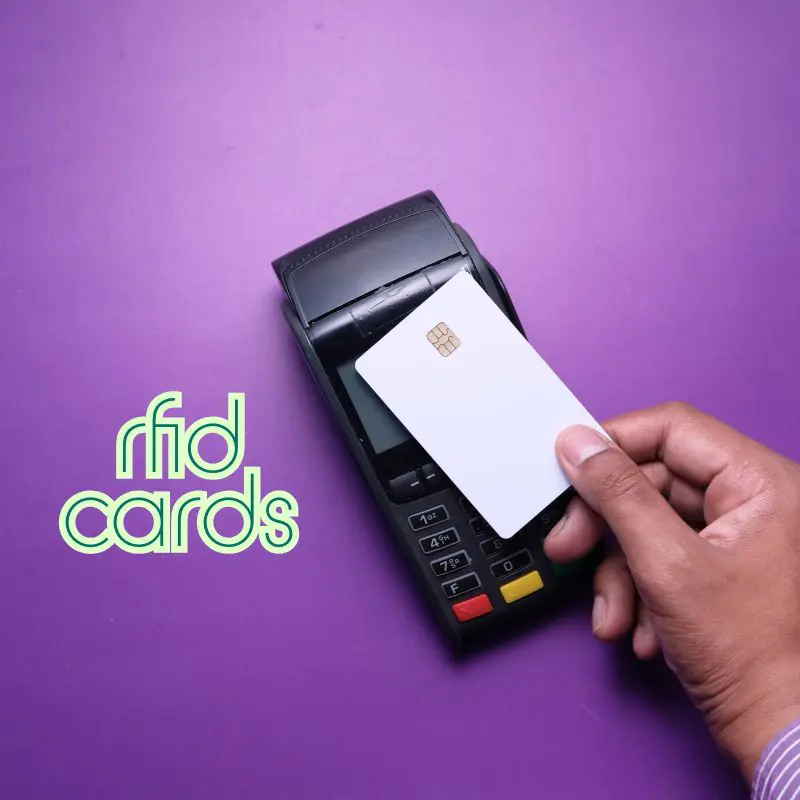
Is RFID the Right Choice for Your Business?
Consider RFID if you:
- Need to improve inventory accuracy or asset tracking
- Manage high-value items or secure facilities
- Want to reduce manual labor and human error
- Are seeking to digitize workflows and scale your business
Bottom Line: RFID offers strong ROI when matched to the right application—and we’re here to help you find that fit.
Ready to Upgrade to RFID Cards?
🔐 Looking to modernize your access control or inventory system?
📩 Request a Free Sample or Custom Quote
📱 Or message us on WhatsApp: +86 138 2318 6864
We provide:
- OEM branding and chip encoding
- Custom sizes and materials
- Bulk pricing for global clients
- Expert consultation and fast shipping
FAQs – RFID Cards for Business
Do RFID cards work with all access control systems?
We will most likely offer cards compatible with ISO 14443A / 15693 standards, which are used by most global systems.
Can RFID cards store user data?
Yes. Depending on the chip, cards can store user ID, balance, timestamps, and even encrypted keys.
Are RFID cards waterproof and durable?
Our cards are sealed in PVC, PET, or ABS, making them waterproof, scratch-resistant, and long-lasting.
What’s the difference between HF and UHF RFID cards?
HF (13.56 MHz): Ideal for secure access, NFC-enabled
UHF (860–960 MHz): Better for long-range tracking (e.g., warehouse pallets)
Komentet
Produkte të nxehta
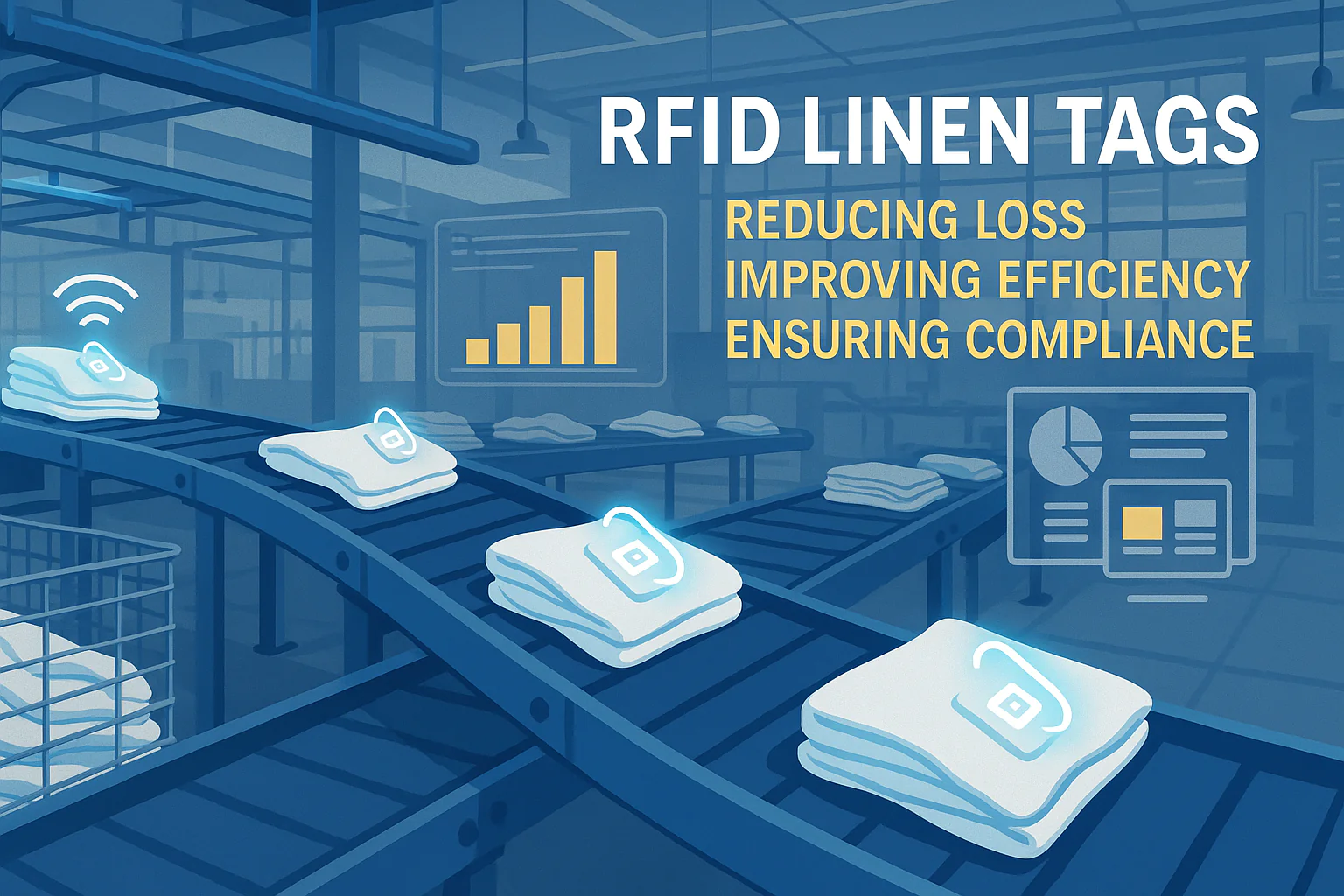
The Benefits of RFID Linen Tags in Commercial Laundry
Managing laundry in hospitals, hotels, or large laundry services is a big job. Each day, thousands of sheets, towels, and uniforms are washed, sorted, and sent back out. But problems like lost linens, sorting mistakes, and manual counting can cost companies a lot of money. For example, mid-sized hotels can lose over $200,000 each year from missing linens.
That’s where RFID Linen Tags come in.

RFID Laundry Tag Guide 2025: Smarter Tracking, Less Waste, and Real Results
Did you know that smart RFID systems can reduce laundry losses by up to 95%? That’s a game-changer for laundry businesses that lose time and money tracking items manually.
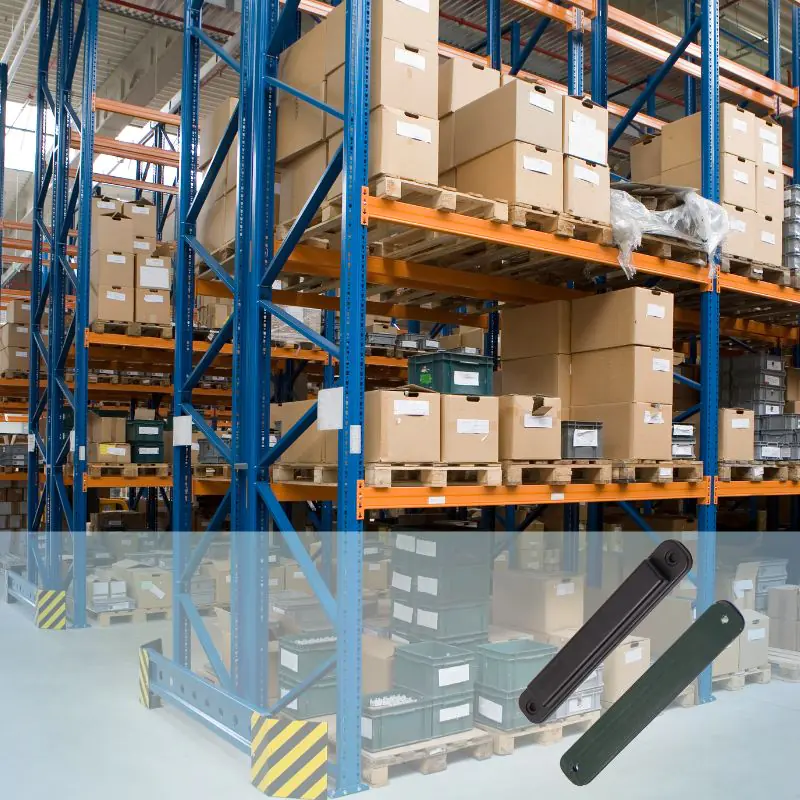
How RFID Tags for Pallet Streamline Tracking in Warehouses
Pallet-level tracking is critical for inventory accuracy, operational efficiency, and real-time visibility in today’s fast-paced logistics and supply chain environments.
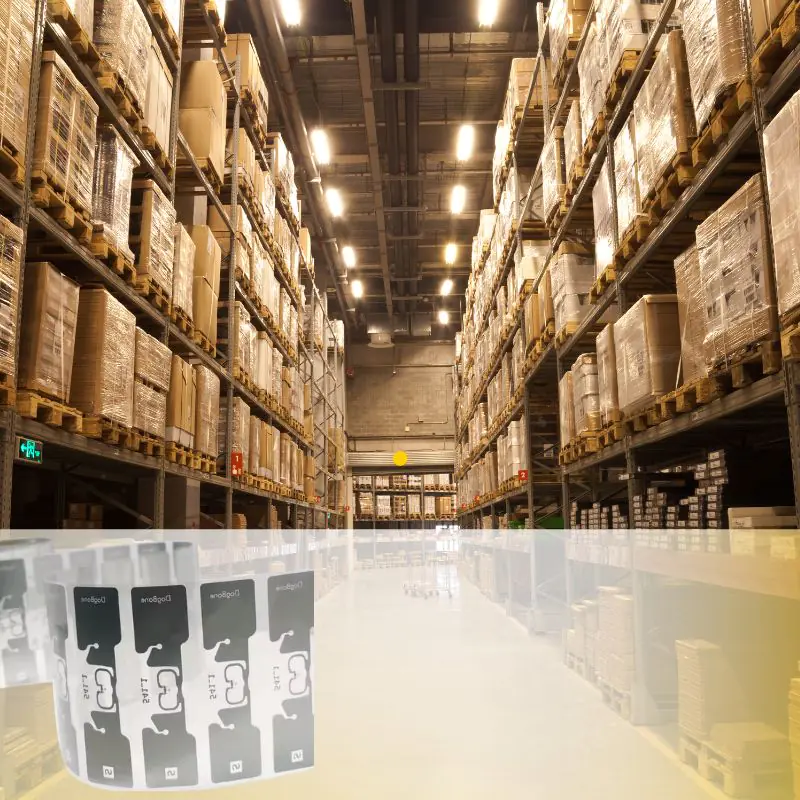
Top 5 Types RFID Tag for Warehouse Automation
Warehouse operations are becoming more complex, and manual tracking methods can’t keep up. RFID tags for warehouse automation enable real-time data capture, faster inventory processing, and better traceability.

RFID Smart License Plates Help Hengshui to Track The E-Bikes
As urbanization accelerates and the green travel movement gains momentum, electric bicycles have become vital to daily commuting in Hengshui, Henan Province.
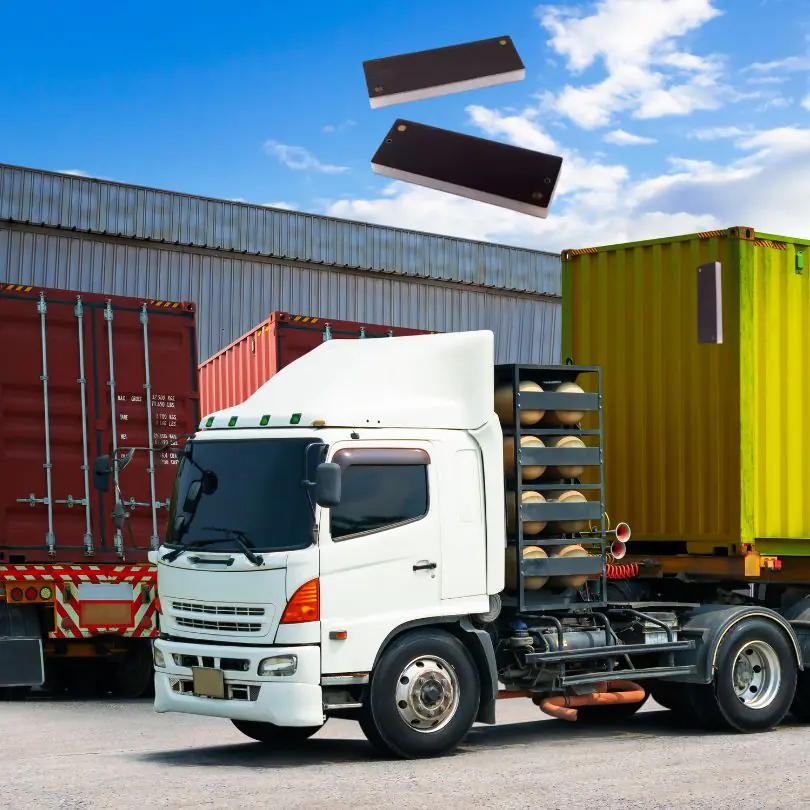
Çfarë është një etiketë PCB
Mësoni se si zgjidhjet inovative të etiketave dhe RFID transformojnë industritë nga shitja me pakicë dhe logjistika në kujdesin shëndetësor dhe arsimin.
Etiketat
BLOG TË LIDHUR

The Benefits of RFID Linen Tags in Commercial Laundry
Managing laundry in hospitals, hotels, or large laundry services is a big job. Each day, thousands of sheets, towels, and uniforms are washed, sorted, and sent back out. But problems like lost linens, sorting mistakes, and manual counting can cost companies a lot of money. For example, mid-sized hotels can lose over $200,000 each year from missing linens.
That’s where RFID Linen Tags come in.

RFID Laundry Tag Guide 2025: Smarter Tracking, Less Waste, and Real Results
Did you know that smart RFID systems can reduce laundry losses by up to 95%? That’s a game-changer for laundry businesses that lose time and money tracking items manually.

How RFID Tags for Pallet Streamline Tracking in Warehouses
Pallet-level tracking is critical for inventory accuracy, operational efficiency, and real-time visibility in today’s fast-paced logistics and supply chain environments.

